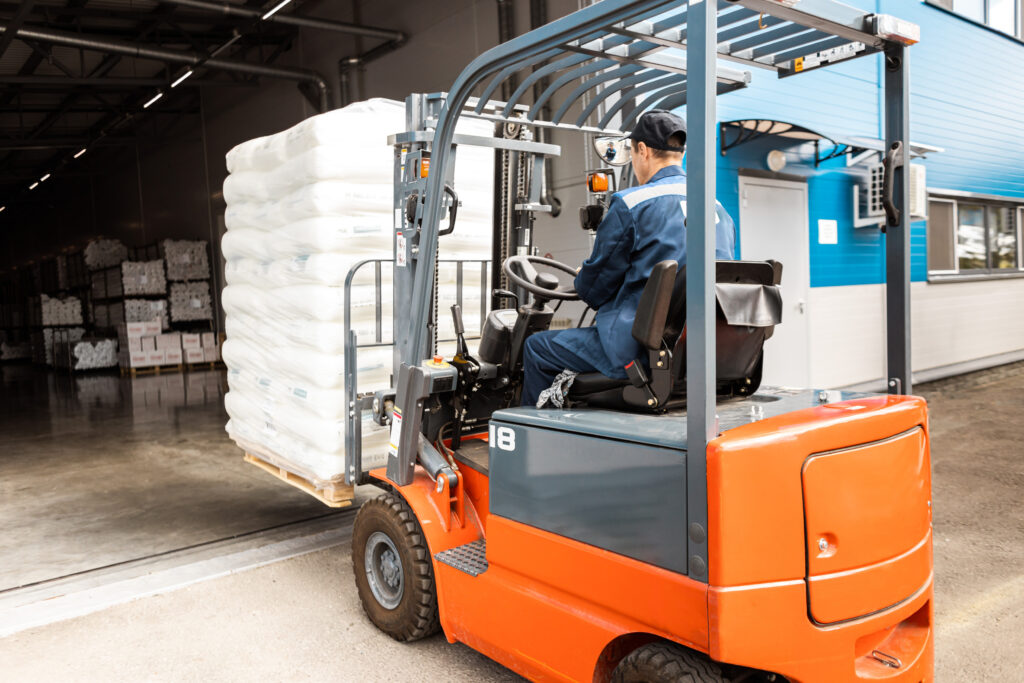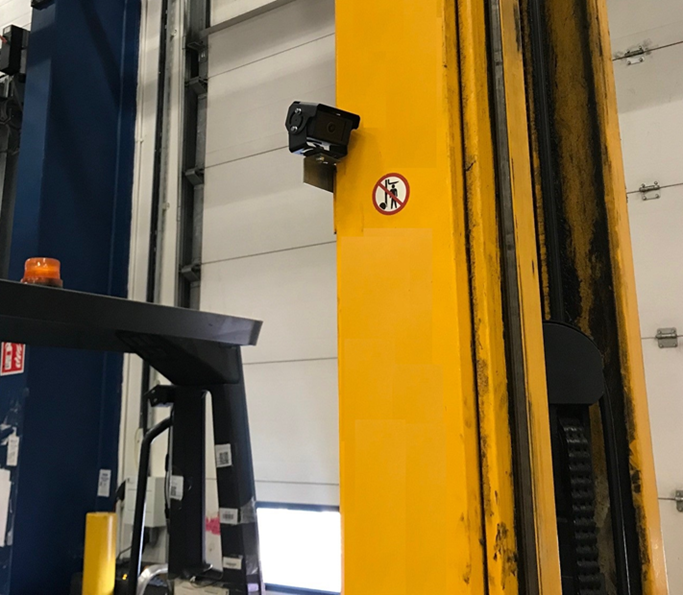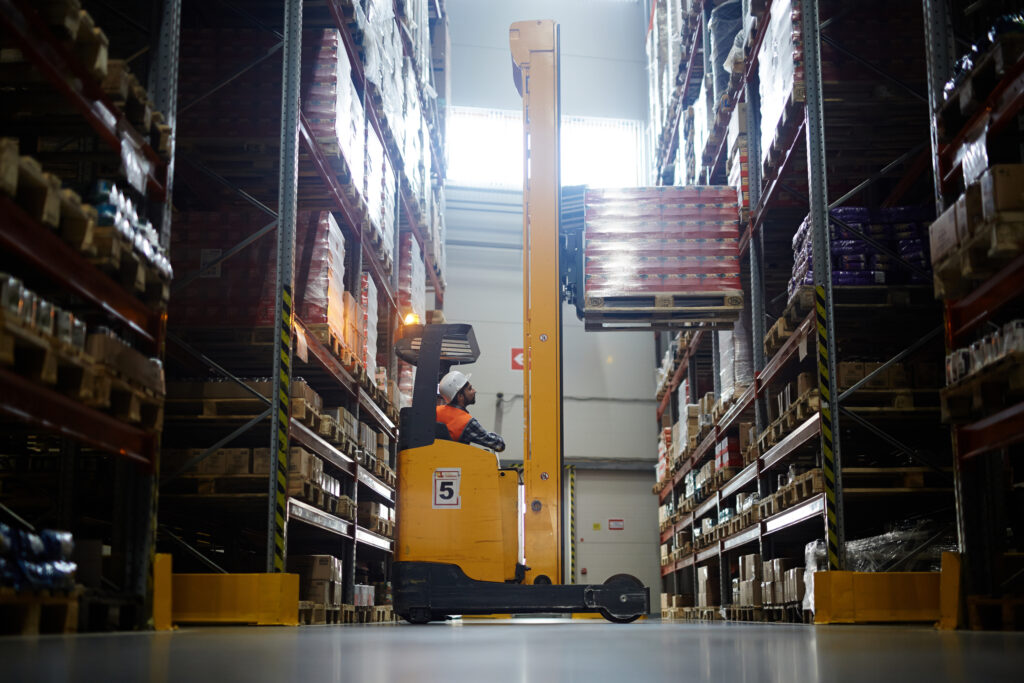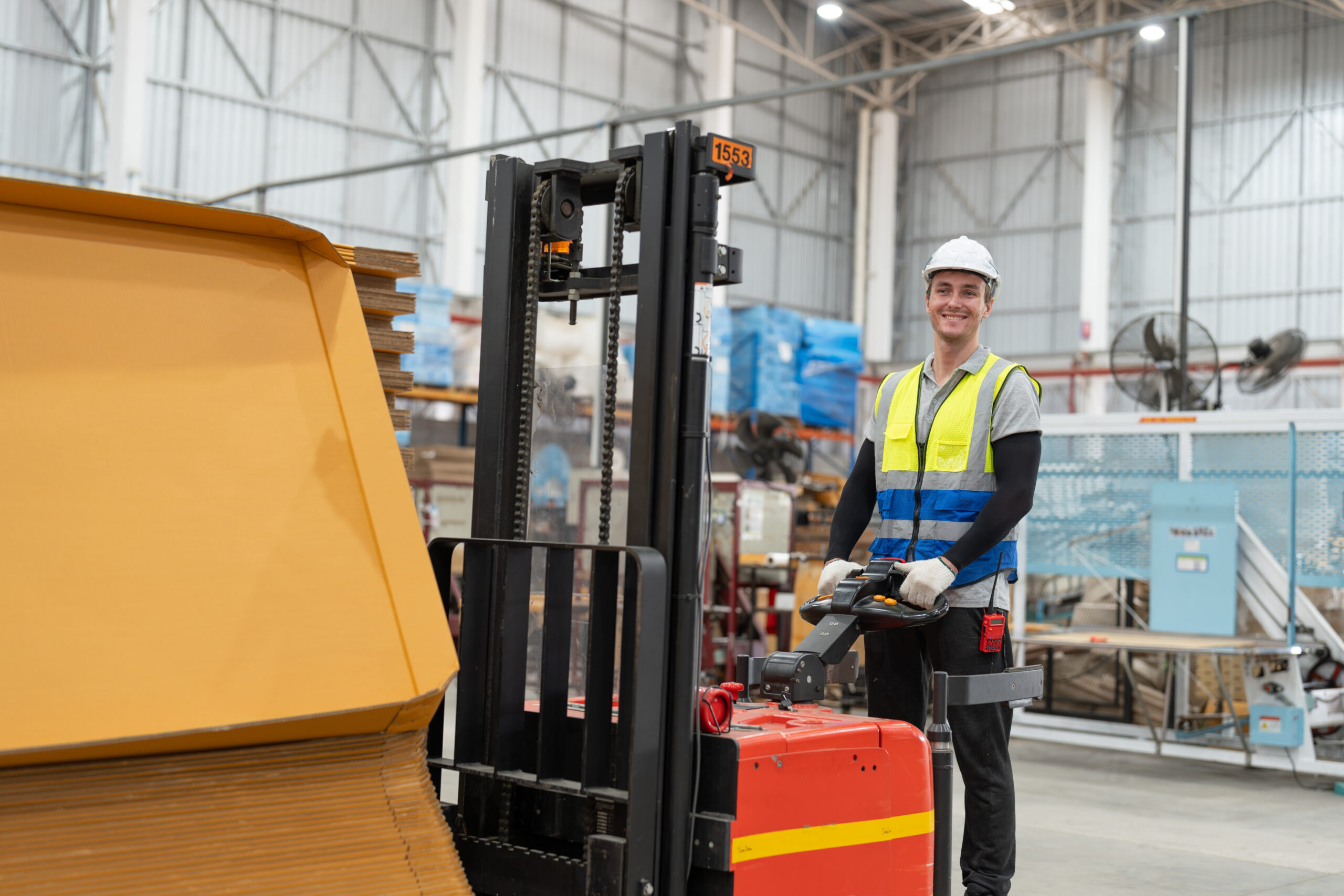In today’s increasingly busy warehouse environment, operating forklifts presents numerous challenges, none more present or hazardous than the issue of forklift blind spots and blind corners. Limited visibility around certain areas of the forklift, combined with narrow aisles and frequent directional changes, significantly increases the risk of accidents to pedestrians, forklifts, goods, and building infrastructure.
Blind spot-related incidents are often preventable but continue to pose a serious concern for the safety of warehouse personnel and equipment. Addressing the risks associated with blind spot forklift operations is essential for reducing injuries, damage, and downtime in material handling operations.
Understanding Forklift Blind Spots & Their Dangers
Every forklift comes with inherent blind spots, the areas around the vehicle where visibility is obstructed either by the forklift’s structure or its load. These blind spots vary depending on the type of forklift, the most common being:
- Counterbalance forklifts: The mast, overhead guard, and load can block or restrict forward and upward vision. Rear visibility could also be compromised if the LPG cylinder or a rear window size restricts the driver’s view.
- Reach trucks: With their deep chassis design and side-mounted controls, these machines limit side and rear visibility.
- Order pickers and turret trucks: The elevated operator position may enhance some visibility aspects but introduces new blind spots, particularly downward and to the sides when moving, with further visibility challenges when operating in Very Narrow Aisles.
According to the UK Health and Safety Executive (HSE), a significant portion of workplace transport incidents involve forklifts. In fact, over a thousand serious injuries annually in the UK are caused by forklift accidents, many of which arise from poor visibility around forklift blind corners and tight warehouse spaces.
Common Risk Areas For Forklift Blind Spots
Certain areas within a warehouse environment are particularly prone to blind spot forklift incidents due to restricted sightlines and high pedestrian or vehicle traffic. These include:
- Corners and intersections: Poor line of sight makes it difficult for operators to anticipate other MHE traffic or pedestrians.
- Narrow aisles between racking systems: Restricted movement leaves little room for manoeuvring or avoiding unexpected obstacles.
- Doorways and transition areas: These often lack mirrors or warning systems, causing blind spot issues during entry and exit.
These high-risk areas require targeted forklift safety measures and heightened operator awareness to effectively reduce the likelihood of blind spot-related incidents.

Challenges of Blind Corners for Forklift Operators
Blind corners remain a hazard in warehouse operations as operators approaching these zones cannot always see what is approaching from the other side, such as another forklift, a pedestrian, or misplaced inventory. Some of the most common accident scenarios at blind corners include:
- Collisions with other forklifts at intersections
- Impact with stationary obstacles or racking
- Striking pedestrians
While there are available options for minimising these risks, such as reducing the forklift’s speed or using its integrated horn, the following section explores in more detail the best ways to manage these challenges, enabling a reduced reliance on the individual driver.
Best Practices For Navigating Forklift Blind Spots
To mitigate the risk associated with forklift blind spots, operators and managers should consider implementing a combination of both procedural and behavioural best practices:
- Approach corners and intersections cautiously, with reduced speed to meet zone requirements and heightened awareness.
- Use visual and audible signalling tools, such as horns, flashing beacons, spotlights, and mirrors.
- Adhere to designated travel routes and one-way systems where implemented.
- Operator training is vital to maintaining workplace safety standards. Managers should specifically address blind spot awareness and how drivers respond, such as implementing a mandatory use of horns when approaching doorways, ensuring that drivers can anticipate potential hazards even when visibility is impaired.
Implementing and adhering to a series of protocols can make a significant difference in the safe navigation around the warehouse and forklift blind spots in particular, ensuring safe working practices are established and maintained.
Solutions For Improving Forklift Blind Spot & Corner Visibility
Beyond operator behaviour, the use of technology can drastically improve visibility and reduce the risk of blind spot forklift accidents. Integrated technologies such as cameras and proximity warning systems, as well as careful warehouse layout design, can collectively enhance the level of safety in and around the busy warehouse floor. Here we explore some leading solutions available to warehouse operators.
Forklift Camera Systems for Improved Blind Spot Visibility
Forklift camera systems are extremely versatile and use the latest technology to provide operators with real-time visual access to hard-to-see areas around their vehicle. These systems reduce forklift driver guesswork and help prevent accidents caused by obstructed views. Types of forklift camera systems available include:
- Rear-view cameras: Enhance visibility when reversing
- Mast-mounted cameras: Provide a clear view when lifting loads at height; outer mast-mounted cameras offer enhanced coverage past the load when driving fork-first, e.g., placing pallets in rows ready for dispatch.
- 360-degree view systems: Offer comprehensive visual coverage around the forklift
With a wide range of options available, forklift camera systems are a practical and effective solution for eliminating visibility gaps, helping operators navigate blind spots with greater confidence and safety.

Mast-mounted cameras provide a clear view when lifting loads at height.
Proximity Detection & Collision Avoidance Systems
Proximity sensors act as a valuable extra set of “eyes” for the operator. These systems typically use pedestrian tags and vehicle & building-mounted antennas to detect personnel and other material handling equipment within the pre-defined blind spot zone. The onboard visual display then alerts drivers when objects, vehicles, or personnel are detected here, minimising the risk of an accident.
Other proximity technology solutions, such as proximity warning bars, offer an additional point of safety for warehouse infrastructure. Warning bars are designed to protect overhead assets, including ducting, doorframes, and walkways, from accidental damage caused by vehicles using audible and visible alarms.
Collision avoidance systems use sensors fitted around the vehicle that provide the driver with accurate information about the immediate area behind and to the side of the forklift. This more advanced form of driver-aid helps forklift operators further by both detecting potential hazards or collisions, and engaging additional warning signals or even automatic braking to ensure a collision is avoided. Benefits of collision avoidance technology include:
- Real-time alerts and automated braking or slowing
- Enhanced pedestrian safety in congested warehouse zones
- Reduced risk of costly equipment or racking damage
As two of the most robust and reliable safety solutions available, proximity detection and collision avoidance systems offer an essential layer of protection by actively alerting operators to hidden hazards, significantly reducing the potential risk of accidents in blind spot areas.
Warehouse Design Considerations for Blind Spot Safety
Smart warehouse layouts play a crucial role in managing forklift blind corners and visibility hazards. While equipment and training are vital, intelligent design decisions can support safety initiatives from the outset, with a variety of easy-to-deploy warehouse design elements, including:
- Improved lighting to ensure all areas, especially corners and intersections, are clearly visible.
- Use of convex mirrors to expand operator visibility at blind corners.
- Implementation of one-way systems to reduce crossing traffic.
- Reduction of unnecessary clutter near entryways and turning points to ensure unobstructed movement.
These design features, when considered during initial warehouse planning or retrofitting, can reduce the likelihood of blind spot forklift incidents.

Creating a Comprehensive Blind Spot Safety Strategy
To effectively manage the risks of forklift blind spots and blind corners, a multi-layered approach is essential for creating a comprehensive safety strategy. This includes:
- Proper operator training
- Procedural controls e.g. speed limits and traffic rules
- Technological interventions such as cameras and sensors
- Optimised warehouse design
By combining these strategies, warehouse managers can create a robust safety program that protects people and assets while optimising productivity. Transmon Engineering provides industry-leading solutions that enable safer forklift operations across all material handling environments, from warehouses and distribution centres to port loading areas and depot yards. Our camera systems, proximity alerts, speed control, and collision avoidance technologies are designed to minimise forklift blind spot risks, keeping your workforce safe and operations running smoothly.
Get in touch with Transmon Engineering today to learn how we can help reduce forklift blind spot risks and enhance safety throughout your warehouse whilst maintaining efficiency and productivity. Contact one of our experts by calling 0116 260 4200.


